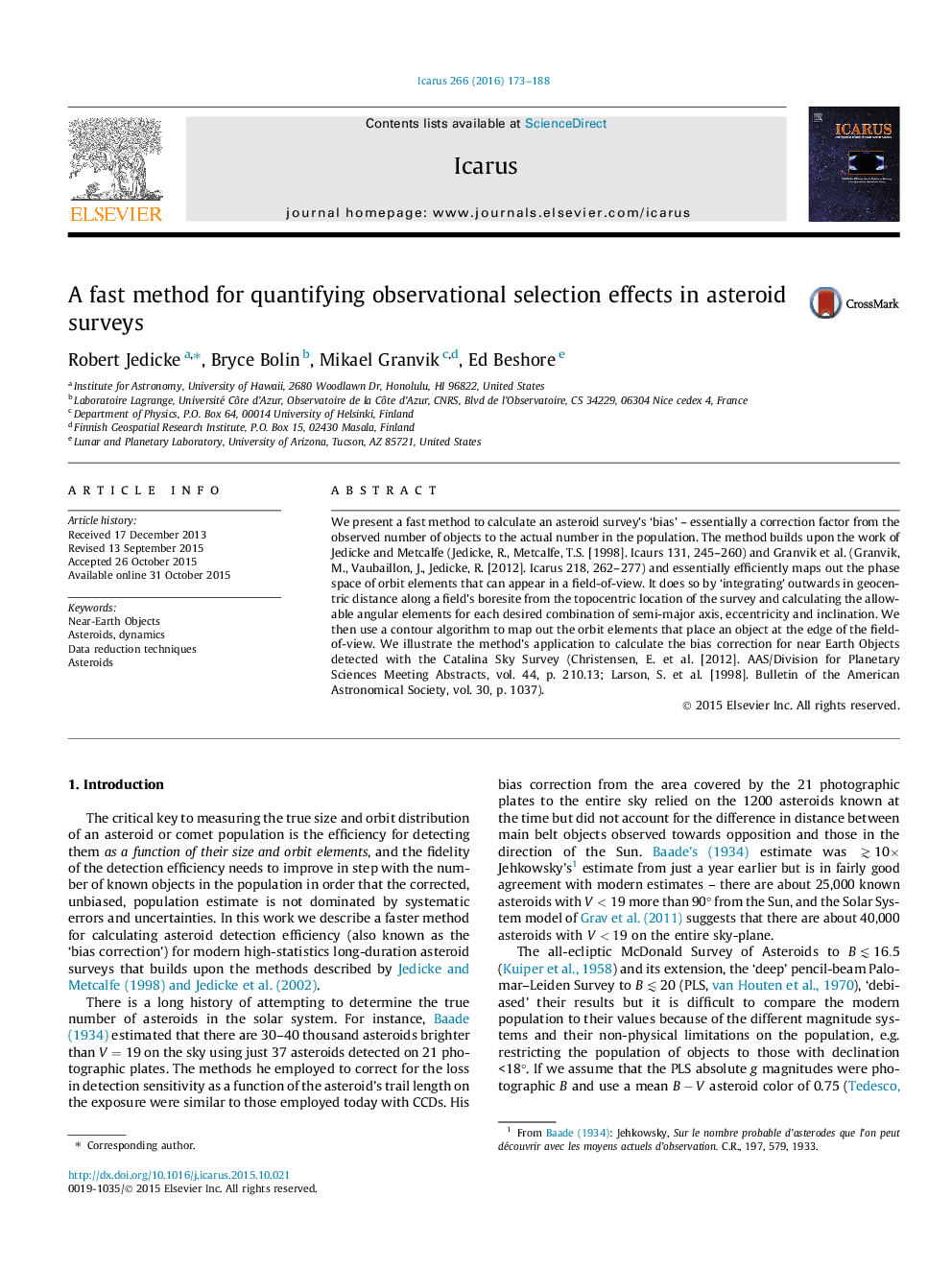| Article ID | Journal | Published Year | Pages | File Type |
|---|---|---|---|---|
| 8135723 | Icarus | 2016 | 16 Pages |
Abstract
We present a fast method to calculate an asteroid survey's 'bias' - essentially a correction factor from the observed number of objects to the actual number in the population. The method builds upon the work of Jedicke and Metcalfe (Jedicke, R., Metcalfe, T.S. [1998]. Icaurs 131, 245-260) and Granvik et al. (Granvik, M., Vaubaillon, J., Jedicke, R. [2012]. Icarus 218, 262-277) and essentially efficiently maps out the phase space of orbit elements that can appear in a field-of-view. It does so by 'integrating' outwards in geocentric distance along a field's boresite from the topocentric location of the survey and calculating the allowable angular elements for each desired combination of semi-major axis, eccentricity and inclination. We then use a contour algorithm to map out the orbit elements that place an object at the edge of the field-of-view. We illustrate the method's application to calculate the bias correction for near Earth Objects detected with the Catalina Sky Survey (Christensen, E. et al. [2012]. AAS/Division for Planetary Sciences Meeting s, vol. 44, p. 210.13; Larson, S. et al. [1998]. Bulletin of the American Astronomical Society, vol. 30, p. 1037).
Related Topics
Physical Sciences and Engineering
Earth and Planetary Sciences
Space and Planetary Science
Authors
Robert Jedicke, Bryce Bolin, Mikael Granvik, Ed Beshore,
